Trucks and Busses
What do these photos tell you about how their trucks and busses looked like?
A Night Coach Bus (1929)
This bus is a night coach or sleeper bus. The photo was taken in September 1930.
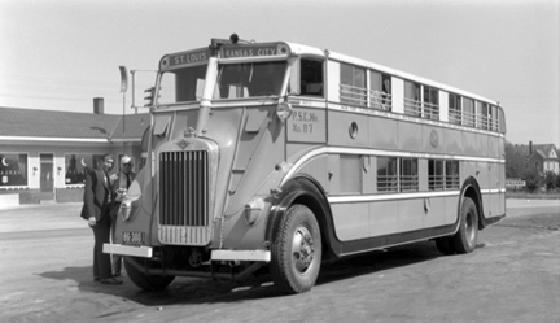
Photo: Denver Public Library, Western History Collection
More About This Topic
The early busses used on long-distance routes were equipped with sleeping compartments. This 1929-model bus had 13 sleeping compartments and carried 26 people. Each compartment had a kitchen, lavatory, and two beds, each 33-inches wide.
A Modern Day Stage (1932)
This is a Union Pacific Stage bus. The photo was taken at the Denver bus station about 1932.
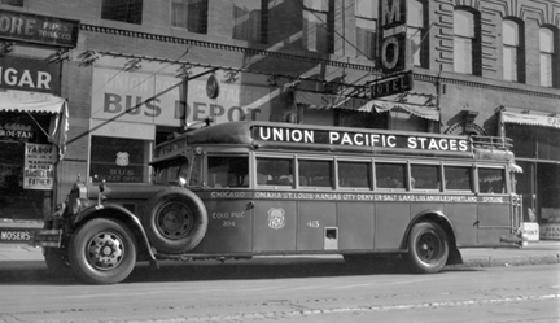
Photo: Denver Public Library, Western History Collection
More About This Topic
The Union Pacific Railroad also owned a bus line. It ran busses from Chicago to the West Coast, serving the cities of Omaha, St. Louis, Kansas City, Denver, Salt Lake City, Los Angeles, Portland, and Spokane.
Their Own Words
"It is raining. After dinner we went [from Denver] by bus for five dollars to Colorado Springs, a summer resort in the mountains. . . . We returned to Denver by bus at 9:15 P.M. . . . Everywhere there are many used buses for sale."
Source: Joseph Rokoszny Diary, August 13, 1930, in "Polish Impressions of Colorado," Essays and Monographs in Colorado History, No. 7, 1987, pp. 89, 90.
Truck Loaded With Appliances
This photo shows a side view of a truck, probably in Haxtun, Colorado. Haxtun is in Phillips County, in northeastern Colorado. The man is posing in a suit and duster hat. The photo was taken about 1910.
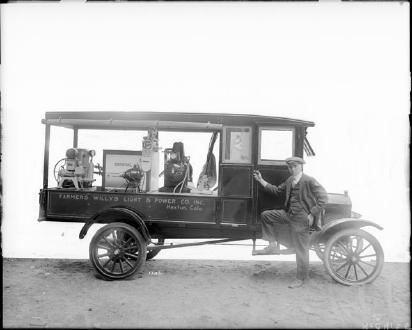
Photo: Denver Public Library, Western History Collection
More About This Topic
The man in the photo is probably a salesman, selling the machines loaded on the truck. These include a washing machine, a vacuum sweeper, and a generator. These appear for sale from "Farmers Willys Light & Power Company." Door-to-door selling was a big business at this time.
Their Own Words
"Dependability is the first and most important factor to be considered when purchasing a Motor Truck. The truck must be able to make satisfactory time—winter and summer—over all kinds of roads, and under the harshest conditions. It must withstand the severe strains to which a Motor Truck, with its heavy load, is subjected. In other words it must ‘always be on the job.’ This fundamental truth is recognized as foremost in Republic construction. Your satisfaction is determined by the dependability of the Motor Truck you buy, and this dependability must, in turn, be the natural outgrowth of recognized high quality and simplicity of design. . . .”
"With the Republic Motor Truck Service Stations—more than 900 of them located in all parts of the country, every station carrying an ample stock of spare parts—with men who know the whys and wherefores of Republic trucks, the purchaser is always sure of that expert service which means satisfaction every day of the year.”
Source: Colorado Transcript, (Golden, Colorado), February 7, 1918.
A Trailway's Bus (1952)
This photo of a Trailway's Company bus was taken at Fountain, Colorado in June 1952.
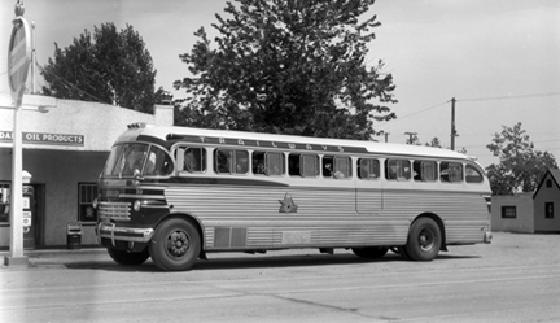
Photo: Denver Public Library, Western History Collection
More About This Topic
This Trailways bus was photographed at a service station. In small towns, gas stations, grocery stores, and motels also sold bus tickets and served as bus stations.
A Truck And Trailer (1934)
The photo of this International truck and trailer was taken in Denver in December 1934.
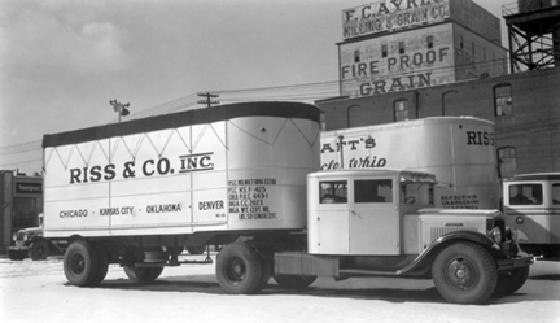
Photo: Denver Public Library, Western History Collection
More About This Topic
By the 1930s, trucking companies were competing with the railroads for carrying long-distance freight. This photo shows two trucks with semi-trailers owned by Riss and Company. This company ran trucks between Denver and Chicago.
Green Brothers' Truck Fleet
This photo shows the delivery trucks and drivers who worked for Green Brothers Fruit & Produce Company. Green Brothers was located on Market Street in Denver. This photo was taken about 1915.
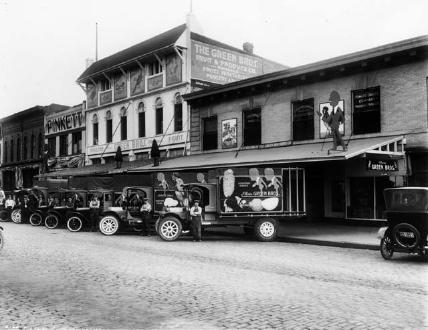
Photo: Denver Public Library, Western History Collection
More About This Topic
You might guess that trucks and autos had a big impact on farmers' lives. Not only did trucks make farmers' lives easier, they also helped farmers get their goods to market faster. In the cases of fruit and vegetables, this speed made it possible to grow more produce. Getting fruit and vegetables to market faster meant less spoilage and waste and more profits.
Their Own Words
"Thousands of businessmen learned the answers to their individual transportation problems and will permanently profit by them. . . . . No industry, no business house requiring either pick-up or delivery can obtain full success today without the use of one or more trucks. The public demands quick service—motor truck delivery is the solution. . . . There can be no doubt in the mind of anyone who makes a serious study of transportation conditions as they exist the country over, but that the next few years will see an amazing increase in the use of trucks. Because speed, economy and adaptability to varied work will be vital considerations it seems certain that the greatest demand will be for moderately light-duty vehicles."
Source: Akron Weekly Pioneer Press, July 11, 1919.
A Fleet Of Coors Delivery Trucks
These are delivery trucks owned by the Adolph Coors brewery. The photo was taken in 1948 at the Coors Warehouse in Golden.
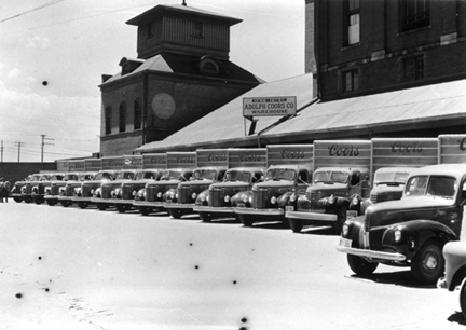
Photo: Denver Public Library, Western History Collection
More About This Topic
Trucks replaced horse-drawn wagons for delivering goods. By the 1940s, large companies like Coors owned fleets of delivery trucks.
A Weicker Storage Delivery Truck
This truck was delivering a machine to a machine shop in Georgetown. The photo was taken about 1952.
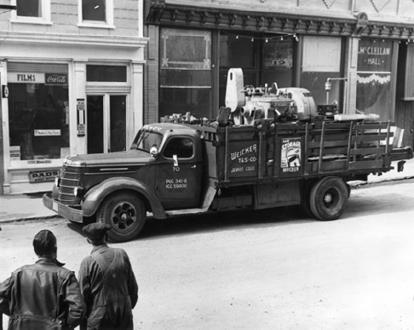
Photo: Denver Public Library, Western History Collection
More About This Topic
The truck in this photo was an International truck, which was a major truck manufacturing company in the 1950s. It was owned by the Weicker Storage Company.

